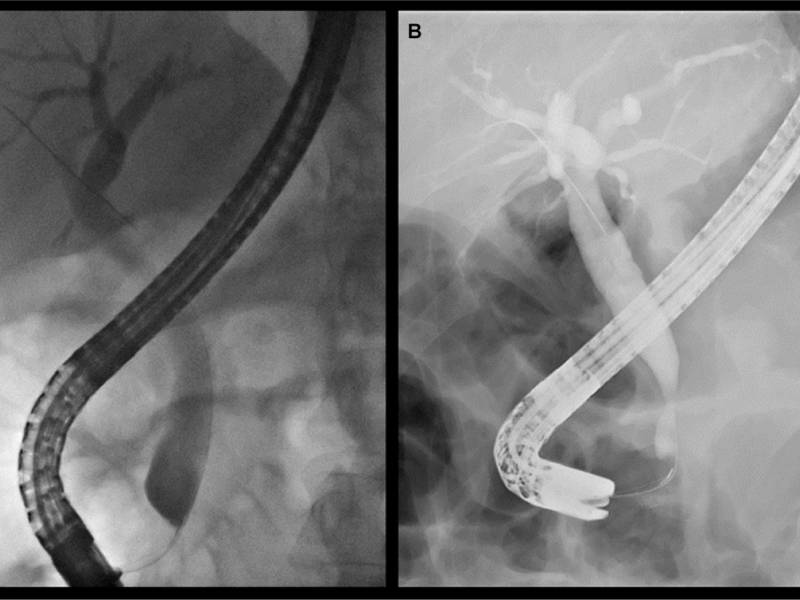What is a bile duct stricture?
Biliary stricture, also known as bile duct stricture, is a condition wherein the common bile duct becomes abnormally narrow. The common bile duct is part of the biliary system. It is a tube-like structure and its main function is to move bile from the liver to the small intestine where bile aids in digestion by helping break down fats into fatty acids. When bile flow is obstructed due to this condition, bile builds up in the liver resulting in an increased amount of bilirubin in the blood. This leads to jaundice, infection, and fever. Dr Manoj Dongare is the best Bile Duct Cancer Surgeon in Pune who provides the best bile duct cancer treatment. He is one of the best HPB Surgeon in Pune.

What causes biliary stricture?
Biliary strictures can be caused by:
- Any damage is done to the bile duct (for example, after gallbladder removal surgery)
- Passage of gallstones to the bile duct
- Infection of the bile ducts
- Pancreatitis (inflammation of the pancreas)
- Intestinal (small bowel) injuries
- Cancer in the bile duct or pancreas
What are the Signs and Symptoms of bile duct stricture?
Common symptoms and signs of a bile duct stricture include:
- Abdominal pain on the right side of the body (where the liver and gallbladder are located)
- Itching (a common symptom)
- Yellow skin or eyes (from the buildup of bilirubin, a waste product)
- Fatigue
- Weight loss
- Fever
- Night sweats
- Loss of appetite
- Light-colored stools
How to Diagnose a Bile Duct Stricture?
A gastroenterologist may Suggest some tests and procedures for diagnosing the presence of a bile duct stricture include the following:
- Blood Test: In addition to a bilirubin test, your blood may be tested for the presence of elevated white blood cells used by the body to fight infection, and for abnormal levels of pancreatic and liver enzymes.
- Abnormal Ultrasound: Abdominal ultrasound is commonly used in women who are pregnant.
- Abdominal CT and MRI Scan: scan of the abdomen or MRI also can identify narrowing within the biliary tract and is a noninvasive procedure.
- MRCP: Magnetic resonance cholangiopancreatography (MRCP) is performed in Radiology using MRI technology (magnets and radio waves) to produce computer images of the gallbladder, pancreas, and bile ducts.
- ERCP: Endoscopic retrograde cholangiopancreatography, or ERCP, is a specialized endoscopic technique used to study the gallbladder, pancreas, and bile ducts, and has the added benefit of being a therapeutic tool.
What is Treating a Bile Duct Stricture?
Once a bile duct stricture has been diagnosed, treatment will depend on the severity of symptoms and the degree of narrowing within the duct.
- Medical Therapy: Patients who have inflammation or infection (cholangitis) within a bile duct are treated first with antibiotics. The majority of patients respond to this medical therapy, during which time a definitive determination can be made for endoscopic or surgical therapy.
- Endoscopic Therapy: A bile duct stricture is commonly treated by placing a small stent (a hollow tube) within the bile duct to keep it open. This procedure can be performed at the time of diagnosis with miniaturized surgical instruments inserted through the ERCP endoscope.
- Percutaneous Therapy: When an ERCP procedure is not the best option for the patient, a percutaneous (through the skin) procedure to dilate a stricture and place a stent can be done instead.
- Surgical Therapy: During surgery, our Liver, Pancreas and Biliary Surgical team removes the stricture and connects the bile duct to the small intestine. This open surgical procedure is performed in the operating room under a general anesthetic.
Book an Appointment:
Dr. Manoj Dongare at Dr. D. Y. Patil Hospital and Research Center provides one of the best treatments for various Liver diseases in Pimpri Chinchwad Pune. For more information about our comprehensive treatment options, or to request an appointment with one of the best HPB and Liver Transplant surgeon in Pune call 09881379573 or Click on Book Appointment for online booking with your near hospital.
